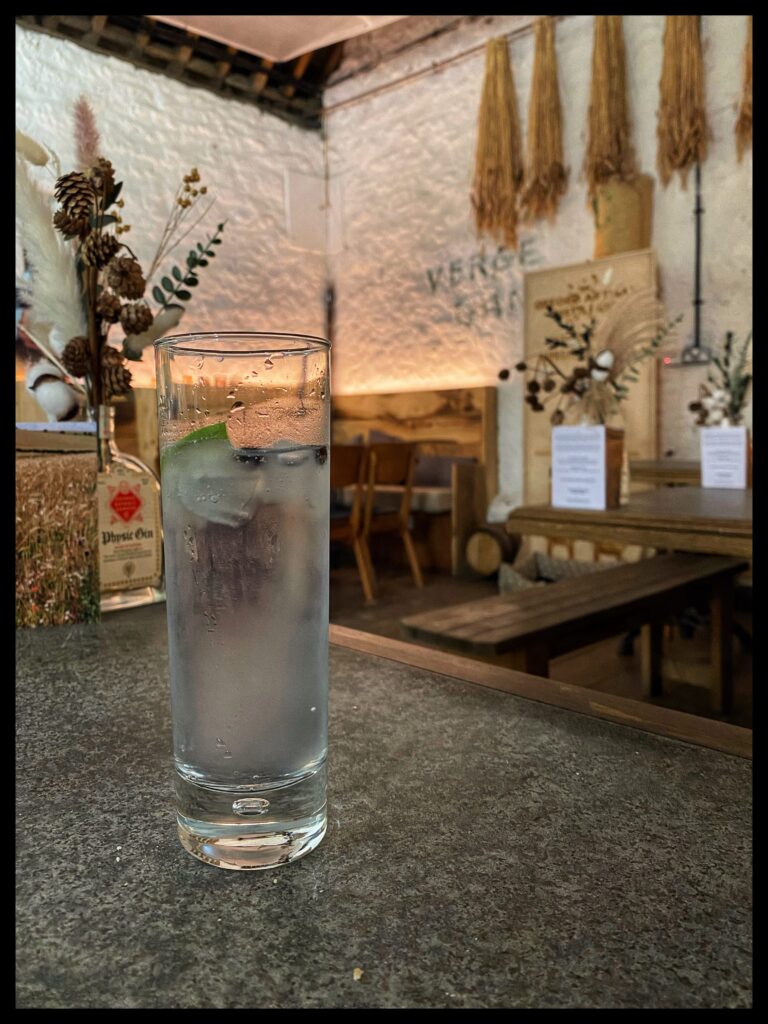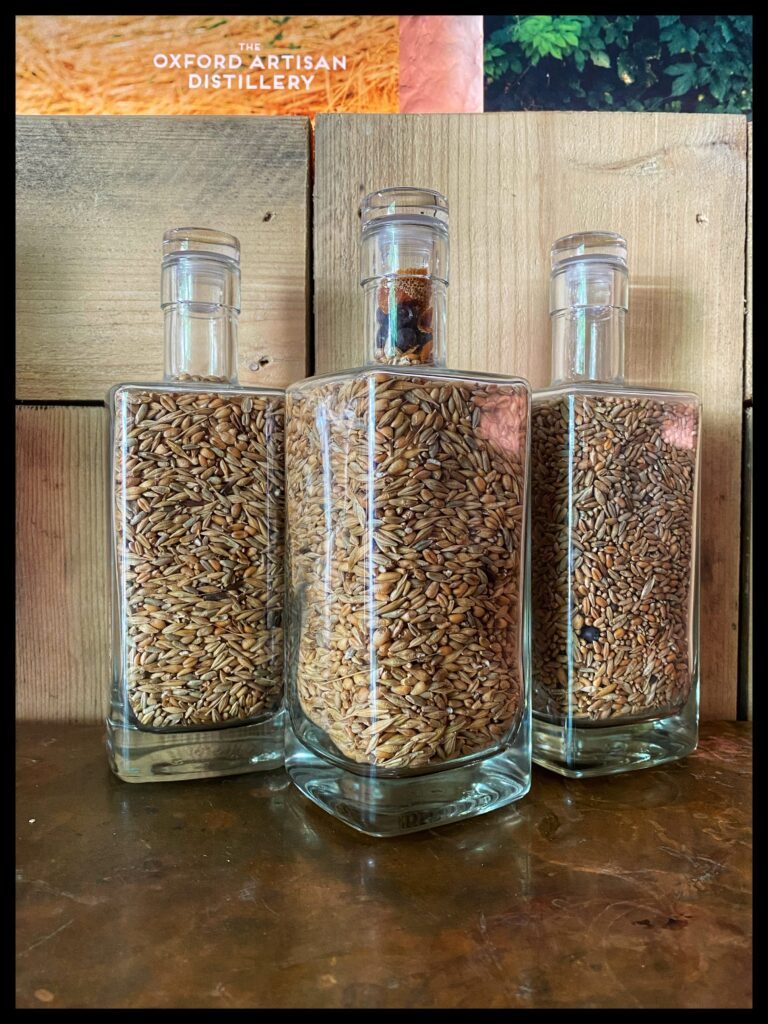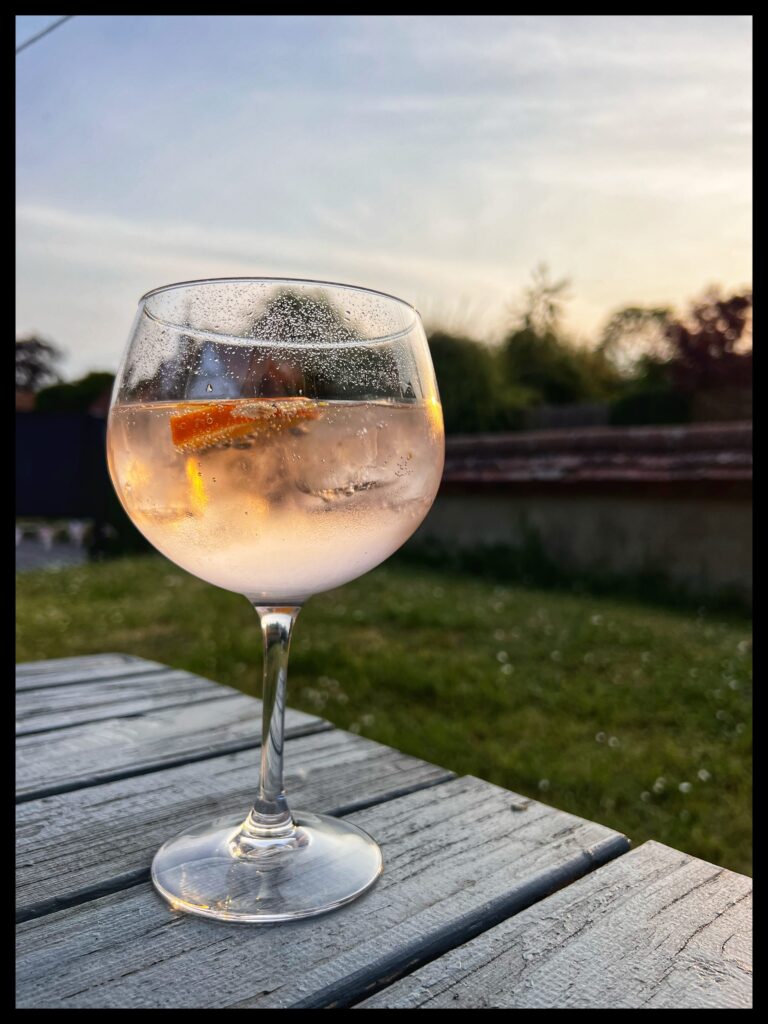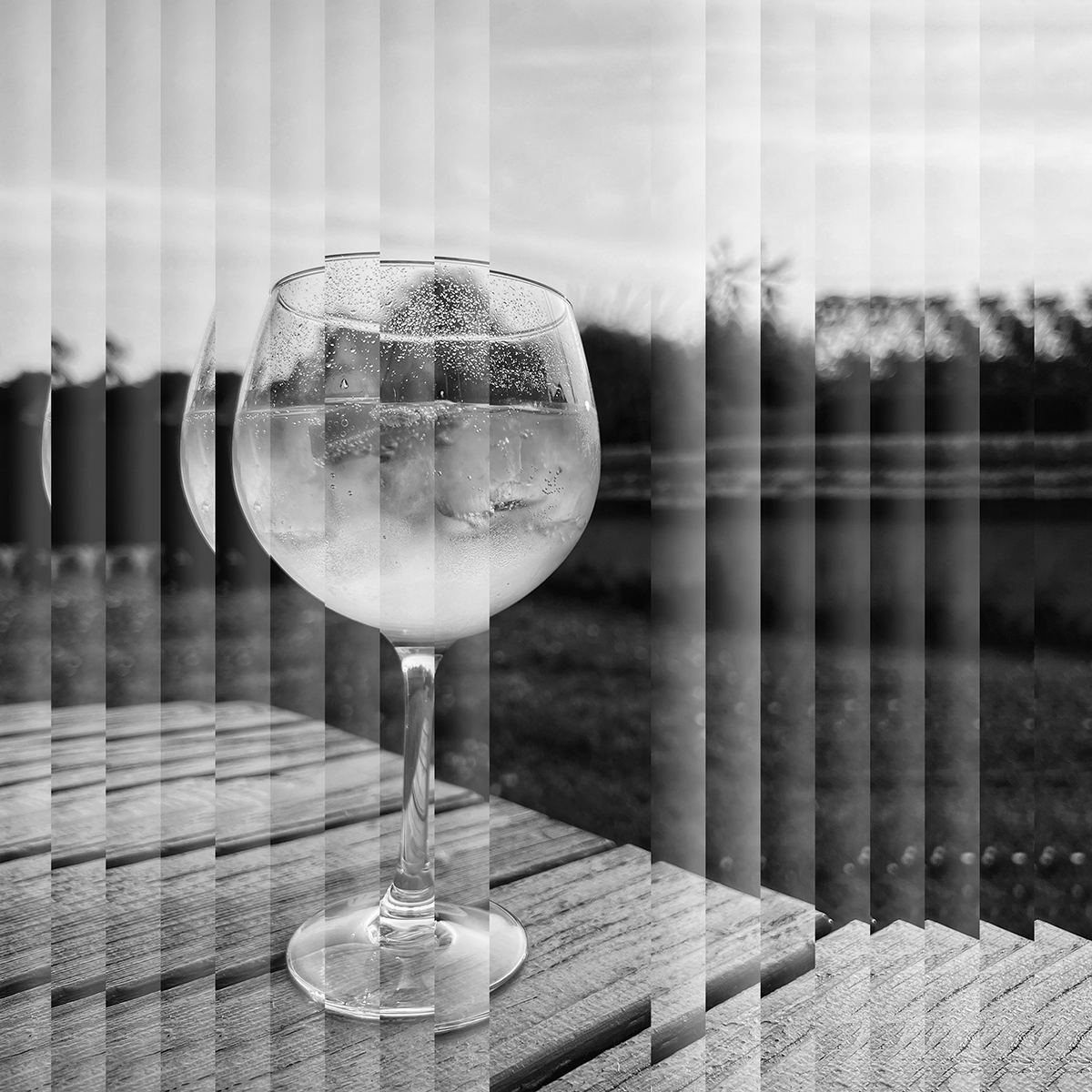Here we are now, entertain us – I feel stupid, and contagious[i]
Oil of Vitriol – Oil of Turpentine – Water of Juniper

In the 1700s, the infamous Gin Craze swept the county and claimed many victims. One of the most famous depictions is found in the satirical work Gin Lane[ii], by William Hogarth, an etching from 1751, which pompously proclaims “Drunk for a penny, dead drunk for tuppence, clean straw for nothing” above the gin shop’s entrance. But the gin of the gin craze was nothing like the modern-day gin we sip today – the only thing in common is literally the name. And even that is somewhat suspect, as those distillers who made said gin, imitated the jenever of Dutch-Courage-fame, and jenever became genever and in turn became Gin. And jenever is not gin as such – like I said a bit suspect indeed.
Back then, peeps chugged gin which contained concentrated sulphuric acid (yeah, the corrosive, destructive substance that is harmful to anything it touches) known as oil of vitriol (much more elegant than corrosive poison), as well as oil of almonds (to mimic coriander and other expensive spices which were used in Jenever production) and oil of turpentine (for its piney-ness to give the illusion of juniper berries).[iii]
“[…] There was formerly kept in the Apothecaries Shops a distilled spiritous Water of Juniper […] distillers […] sold it under the Name of Geneva. The common Sort however is not made with Juniper berries, as it ought to be, but from Oil of Turpentine […]”[iv]
The distiller behind those words, Ambrose Cooper, further offers the reader a proper recipe for making genever “[…] Take of Juniper-berries three Pounds, Proof Spirit ten Gallons; Water four Gallons. […]”[v].
Simple – seems straight forward. He then contrasts it with the adulterated version, or common genever as he calls it “[…] Take of the ordinary Malt Spirits ten Gallons; Oil of Turpentine two Ounces; Bay Salt three handfuls […] The Ingredients used by the Dutch are, however, the same as those given in the first Recipe […]”[vi]
So the Dutch jenever was high quality, yet the stuff distillers tried to flog here was anything but. Nothing much has changed since 1760 has it: if people can ride on the success wave of others they will, and if they can make money from it they sure as hell will cut corners to make more coin.
Additionally, various flavor and aroma additives such as limewater and rosewater where added, as well as alum to enhance the overall taste of the spirit (in today’s world, alum can be used to bind dye to cotton to ensure the dye becomes insoluble)[vii]. Yummy… and a far cry from the usual botanicals you would expect, eh?
Mother’s Ruin on Gin Lane and a ginnaissance
Common genever or gin was everywhere. And gin consumption was everywhere too. Gin was relatively cheap and highly addictive. Over-consumption became the norm, and without any awareness of the dangers of excessive imbibing, people became hooked. Gin Lane offers up ideas of how gin and its consumption was often perceived – total, reckless chaos. Mothers dropping their babies in an alcoholic stupor, gaunt people falling about and drunken fights on the streets.

As you can tell by the rather, shall we say colorful ingredients, it was also dangerous to consume – if the alcohol addiction didn’t kill you, the poison in the gin surely would do. Gin and excessive drinking were blamed for rising crime rates, neglect of human decency, and general misery. It certainly couldn’t have been the fact that people lived in absolute poverty, and people tried to forget and find comfort whenever they could – clearly that was not the issue here.
And because people took this level of gin imbibing and gin adulteration to new heights whenever and however they could, life was expensive, the authorities had to step in.
Enter The Gin Act 1751 stage right.
This piece of legislation ensures that unlicensed gin sellers and merchants, including barbers, grocers and street peddlers, were unable to sell the stuff to the wider public. Lager distilleries and retailers were still allowed to offer gin, but the whole process became more regulated and, more importantly, licensed, and that of course, at a higher cost to the potential license holder.
The Act consequently, killed the gin graze fully (it was already slowing dying off) and crying babies were once again tended to by their mothers, and a less drunk public began to nurse their hangovers and rebuild their lives.
In 2019, the online drinks store Threshers published an article claiming that “[…] the alcohol industry has experienced a ‘ginnaissance’ […]”[viii] and we were on the brink of a craft gin craze. Think unusual flavours, along the lines of Parma Violet, Mango, Pineapple, Mince Pie, and Baked Apple and Salted Caramel. And I guess we’re still kinda hovering around there for the time being, although the ratio of juniper forward craft gins to quirky flavoured gins still favours the former. Craft is what craft is – some producers read and follow the rule book, others rip it apart. Yes, legally junipers must be present in gin to be called gin, but not everyone likes a juniper-forward gin. If there is demand for a product, it has a place in today’s spirit’s shelves, simple as that.
And by now you might wonder why I am writing all about jenever and gin this month, as am I, to be honest, but by fluke, gin has arrived on my radar, even though I’m not a gin drinker per se.
I just can’t seem to get the water of juniper out of my head. I’ve always thought of gin as something a bit meh!, a clear spirit which was usually made by distilleries to make some money while their finer spirits, typically rum, or whisky/whiskey, where ageing in barrels. Gin was akin to vodka/wodka – something that had to be drunk with a mixer to either give the drink some sort of flavours (who remembers gin and juice?), or to ensure that the spirit flavour was non-existent (wodka and energy drink anyone?).
I grew up with amazing local spirts, such Obstler (a clear schnapps made from fruit) or Klarer (a clear schnapps made from grains) and seeing a schnapps bottle on the table after food was common, whether one drank an Obstler, a Kuemmerling or Jägermeister for its digestive prowess. I guess I gravitated towards the darker coloured herb-bombs, and still prefer a dark schnapps to a clear one today. And, I still shoot them. I don’t really sip schnapps, to the protest of the husband, but my palate isn’t ready yet for that intense experience spirits can bring. And if I have a schnapps after dinner, it’s for remedial purposes more than a flavour experience.

Nonetheless, I am committed to furthering my education, whether this is in a self-absorbed attempt to get the gin out of my thinking for good or not, you be the judge. So, on the second Saturday of June, incidentally World Gin Day[ix], I harassed the husband to come to a gin festival with me.
Junipalooza[x], here we come!
Do cool beards drink gin? A ‘lil sesh at a ‘Meet the Maker’ festival
It’s a sunny Saturday morning in the nation’s capital as we exit the tube station. It is already rather warm for my liking; my water bottle is empty and I’m re-applying sunscreen for the second time. The husband shakes his head in disbelieve. I keep crossing the street in unsuccessful attempts to stay in the shade on the walk to the venue, and the husband is bordering on whiplash trying to keep up with my movements.
Slightly out of my depth, we wander in. The location is familiar, we have been here a few times for beer festivals, and I’ve always enjoyed the venue. It somehow doesn’t feel like London, but then what should London feel like?!
There are no queues – beer festivals take note! We are presented with a tasting glass, a posh wristband and a glass bottle of water. Again, beer festivals take note we are here to sample high octane spirits and we are trusted with glass bottles. This feels all rather plush.
“Do you think there will be cool beards?” I asked the husband on the way, trying to figure out if the gin world is for me. A firm believer in “your vibe attracts your tribe” I feel a bit a like a fish out of water. “Yes, there will be.” he answered. And, of course, there were a few beards and flannel shirts, amongst the floral and pastel button-down shirts, boat shoes and chinos. The craft scene has its uniform after all, and it seems to be universal.
Floral dresses, light pink shirts and navy jumpers tied around shoulders, not really my crowd (yet?), but I persevere – cool beards do apparently drink gin after all. The husband is a leading example.

We sampled distilled gins, compound gins, London Dry gins, Old Tom gins, English gins, Indian gins, Japanese gins, and an English vodka and a Japanese sake (for good measure). We tasted spiced gins, floral gins, herbaceous gins, and fruity gins. You could mix gins with classic Indian tonic water, floral tonic water, fruity tonic water, citrussy tonic water, herbal tonic water, aromatic tonic water, tonic water with Earl Grey tea tonic water, cucumber tonic water, … you name it, it was available, but the husband and I were there to taste [xi]
The place was buzzing with gin! The crowd, sampling glass in hand, lived and breathed gin, whether as a maker or imbiber! It may not be my tribe, but I’m starting to build missionary connections.
And then, somehow it clicked with a wheat-based gin: I started to taste the actual spirit – I could taste the grain it was made from, and I could pull botanicals out of the liquid. The alcohol was no longer harsh and burning, it became smooth and welcoming.
And then it happened again with a grape-based gin, and again with rye-based gin. I am on a roll here! Well, I am by no means saying that I can tell a rye-based gin from a grape-based one, or that I can list all the botanicals in order of their percentage content, I am not an expert, but I am starting to enjoy gin.
And in all fairness, what is not to enjoy about it?
Gin comes in many many many many iterations
In its most basic form, gin is a clear spirit which is made up of unaged alcohol and botanicals. You may have even heard the argument that gin is basically flavoured vodka. Technically, both start with the same base: neutral spirit. This can be from grains such as wheat or rye, it can come from fruit, grapes and apples for example, it can come from potatoes, or any substance of agricultural origin. Historically, people used the stuff that was available in abundance and therefore cheap.
For argument sake, let’s say we’re interested in a grain-based gin, and we are a grain to glass distillery. This means we grow and harvest our own crop. We then malt the grain, mill it and brew it into a quasi-beer, i.e., fermented wash. Once fermented we distil the liquid, et voilà we have our base spirit.
We then distil said neutral base spirit, called so as it is fairly unbiassed in flavour, with our chosen herbs, botanicals and spices, and we have gin, ladies and gentlemen[xii].
As nurturing fields and herb gardens can be time consuming and costly, some distilleries buy in their neutral base spirit in from somewhere else, which they then distil with botanicals on site, which is a little less time and capital consuming, for starters you only distil once.
It is up to the distiller which approach is favoured, but to be able to legally call the result gin, juniper must have been included in the distillation process. Just like Ambrose Cooper would have wanted – no Oil of Turpentine in sight.
And because gin is such a basic an unbiased and open spirit, it lends itself to experimentation with various herbs, spices and botanicals.
Alongside the required juniper, you can find cardamom, citrus peel coriander, angelica root, seed and flower, cinnamon, cassia bark, liquorice, cucumber, lavender, pink pepper, fennel, yuzu, heather, rhubarb, dandelion, pomelo, lime, bog myrtle, mint, tamarind, olives, passion flower, eucalyptus, lily roots, balsamic vinegar, honey, celery seed, star anis, … I’m sure you get the idea.
Often, gins will also contain orris root, which has a double duty of adding essentials oils as well as acting as a form of binder for the other botanicals – basically it ensures that the aromas and flavours stay in the glass and don’t instantly evaporate.
Let the fun beGin
So it seems gin has been around for a long time and will be around for a long time too. And maybe it is not just a bit meh! as previously thought of. Gin is being distilled around the world, and the juniper-based spirit flavoured by botanicals from all the far corners of the world, whether Japanese ume or English quince, Himalayan Juniper or German woodruff.
Well, what a month June 2023 has been: I’ve barely scratched the surface of this juniper thing, but I’ve attended my first dedicated gin festival, visited my second gin distillery, partook in guided tastings, ordered gin and tonic instead of beer at the pub after learning that 90% of all gin[xiii] is consumed as a G&T, had a G&T after work at home, and am about to round the monthly voyage off by sipping some jenever in Belgium, but more on that another time. Until then,
Macht’s Euch fein ihr Lieben
Prost!
xxx
[i]Smells like Teen Spirit by Nirvana, September 10, 1991
[ii]The British Library, Gin Addiction 1751 https://www.bl.uk/learning/timeline/external/tab583f13fginlane-tl.jpg [Accessed 20/06/2023]
[iii]EWA – Edinburgh Whisky Academy, Certificate in Gin https://www.edinburghwhiskyacademy.com/courses/certificate-in-gin [Accessed 20/06/2023]
[iv]Ambrose Cooper, The Complete Distiller. Second Edition (1760), Chap. LV – Of Geneva, pp. 248-252
[v]Ibid.
[vi] Ibid.
[vii]EWA – Edinburgh Whisky Academy, Certificate in Gin https://www.edinburghwhiskyacademy.com/courses/certificate-in-gin [Accessed 20/06/2023]
[viii]Threshers, The Next Gin Craze, Our 2022 Predictions https://threshers.co.uk/blogs/news/the-next-gin-craze-our-2020-predictions [Accessed 20/06/2023]
[ix]World Gin Day
Home
[Accessed 21/06/2023]
[x]Spirits Society, Junipalooza! London https://www.spiritssociety.com/junipalooza-london [Accessed 21/06/2023]
[xi] Although thankfully, spittoons were provided, so we left the building still in control of our senses. Beer festivals, take note?!
[xii] Please note that I am using rather large brushstrokes here, distilling is a scientific process and best done by professionals who are licensed to do so.
[xiii]EWA – Edinburgh Whisky Academy, Certificate in Gin https://www.edinburghwhiskyacademy.com/courses/certificate-in-gin [Accessed 20/06/2023]

Leave a Reply